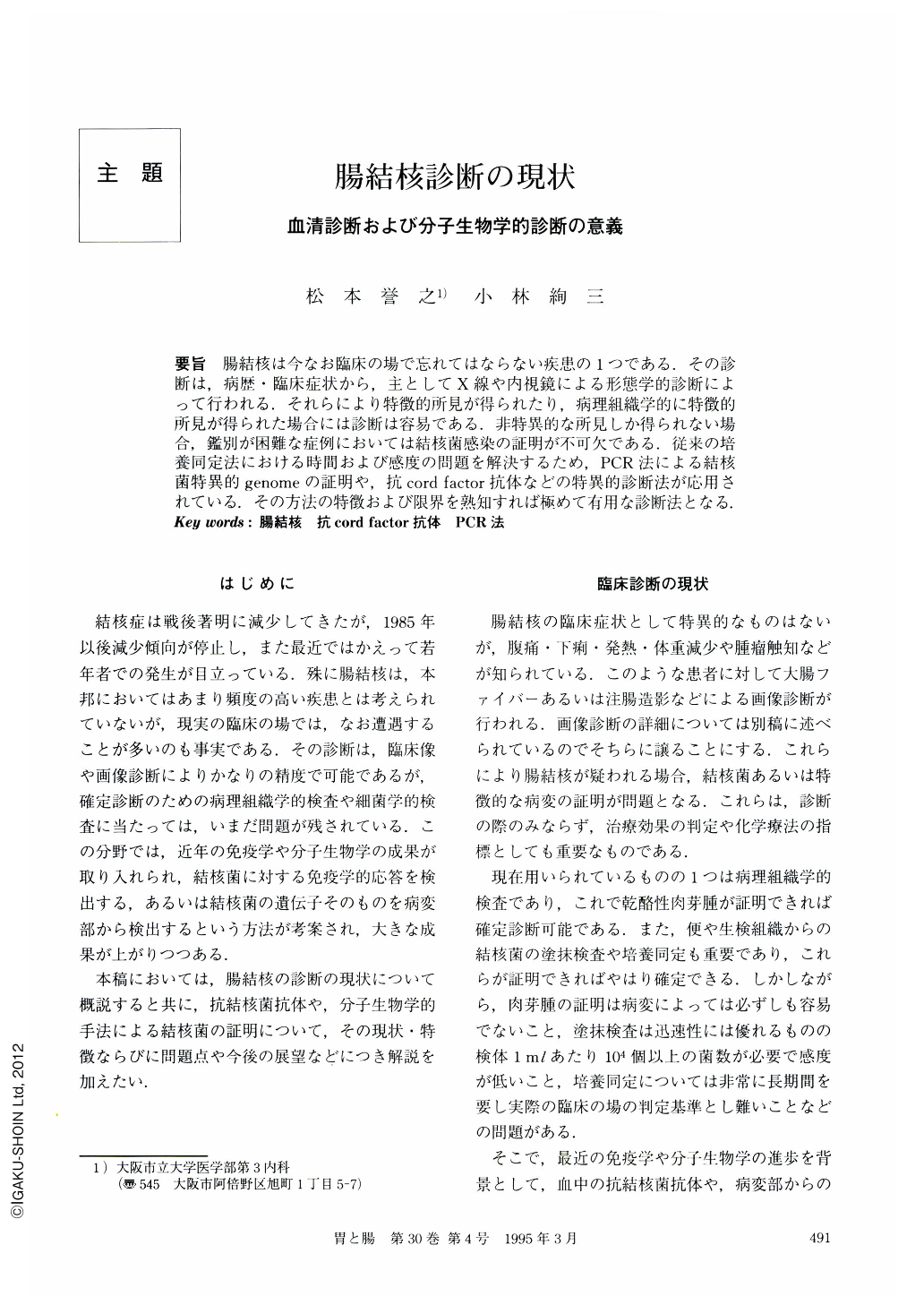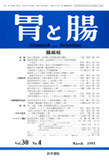Japanese
English
- 有料閲覧
- Abstract 文献概要
- 1ページ目 Look Inside
要旨 腸結核は今なお臨床の場で忘れてはならない疾患の1つである.その診断は,病歴・臨床症状から,主としてX線や内視鏡による形態学的診断によって行われる.それらにより特徴的所見が得られたり,病理組織学的に特徴的所見が得られた場合には診断は容易である.非特異的な所見しか得られない場合,鑑別が困難な症例においては結核菌感染の証明が不可欠である.従来の培養同定法における時間および感度の問題を解決するため,PCR法による結核菌特異的genomeの証明や,抗cord factor抗体などの特異的診断法が応用されている.その方法の特徴および限界を熟知すれば極めて有用な診断法となる.
Intestinal tuberculosis is still one of the important infectious diseases of the intestine. Clinical diagnosis is mainly carried out by radiologic and/or endoscopic features specific to the disease. Although histopathologic and bacteriologic findings such as caseous granuloma and biochemical features of bacteria lead to definite diagnosis, this method is often inefficient and is a timeconsuming process. For a rapid, convenient and accurate diagnosis of tuberculosis, serologic and genetic methods have been adopted.
As a serologic marker, anti-cord factor antibody was useful in discrininating active disease from quiescent disease as it is also in pulmonary tuberculosis. Furthermore, by defining the approporiate cut-off point of the ELISA system, it is useful in differentiating tuberculosis from other inflammatory bowel disease, such as ulcerative colitis and Crohn's disease.
Amplification of DNA segment specific to Mycobacterium tuberculosis by the PCR method is theoretically a very sensitive and quick method to prove a bacterial genome. However, we need improvement and standardization in the procedures for collecting samples and treating them for the extraction of DNA.

Copyright © 1995, Igaku-Shoin Ltd. All rights reserved.


